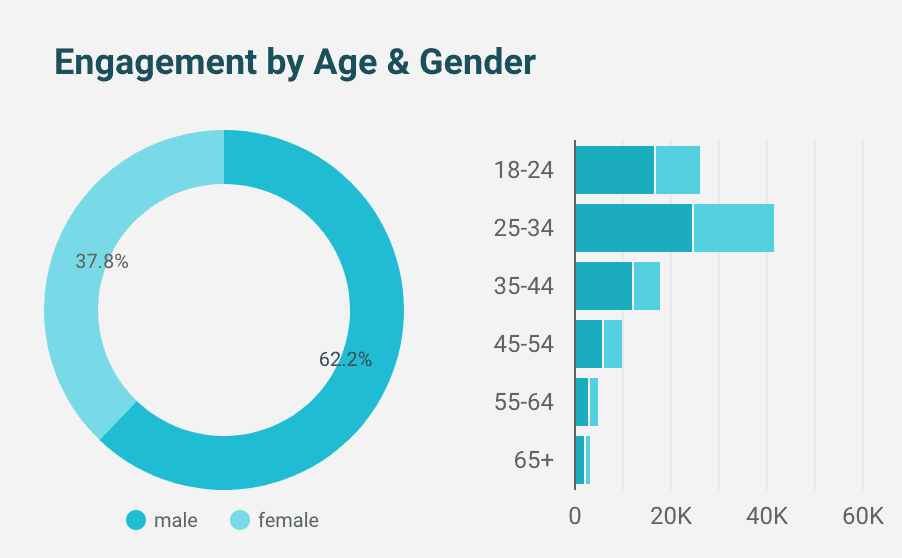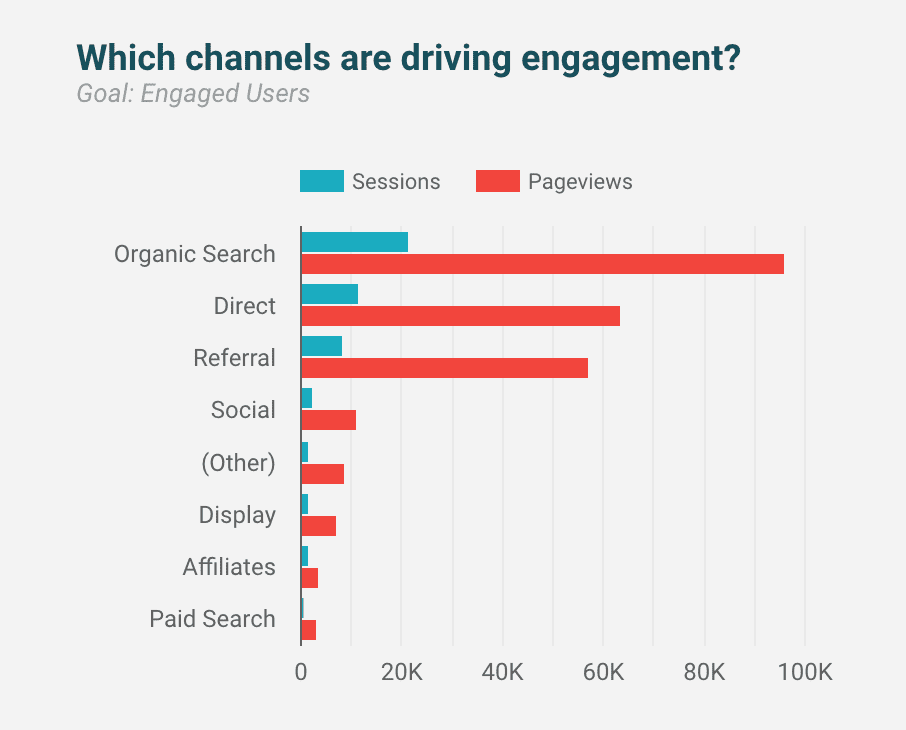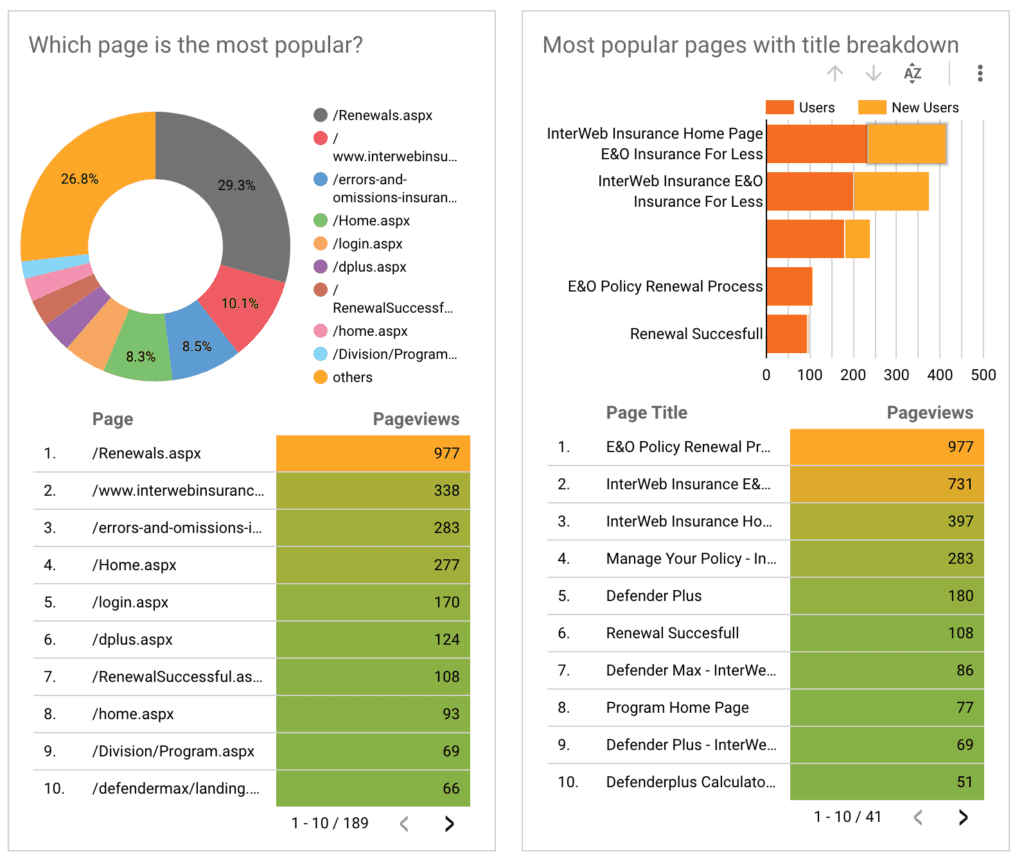Do you even know the answer to this question? Are you monitoring it? Have you realized how much this can help you assess what areas of your marketing are working vs what is not? If you don’t know where your website traffic is coming from then you’re already behind the game. Knowing exactly what marketing efforts are working for you and which ones are not moving the needle can be a huge help when choosing where you should spend your time and effort.
With all of our clients we strongly believe they should be using Google Analytics on their website, and make sure that they are tied into their social and email marketing platforms as well.
We’ve put together a simple to follow guide for understanding the value behind Google Analytics. See the bulleted list below that will help you focus on where your website traffic is coming from and who exactly is your demographic and how are they interacting with your website content.
- Audience
- Acquisition
- Behavior
Audience
The term “Audience” refers to your users. Total number of users, new users, the total number of sessions, bounce rate, page views, number of sessions per user, and average session duration. When you are considering where your website traffic is coming from you probably have an ideal client in mind. One who is comfortable with your price point, near your companies location or service range, and lastly are looking for the service or products you provide.
In this screenshot, you can see a glimpse of what we are covering here. This shows the return value of the traffic this client is receiving by referral source meaning, where the heck the user came from or click to get to the site, and also the demographic that is converting from those sites. This really helps you break down what is working as far as the marketing output you are doing.

Understanding your demographic even further can help you make decisions about your marketing all the way down to the creative assets you are sharing on social media. If you are for instance pulling in a larger group of younger people than you may have originally thought, it might be a good idea to try catering to them a bit more in your message and tone. Especially if this is an audience you want to focus on.

LThis works the other way around as well. If you aren’t getting the right type of audience, then you can evaluate what topics, talking points, or even graphics might be off. Once you start to pay closer attention to your demographic and what they engage with, you should start to see a change in your audience over time.
Acquisition
The “Acquisition” simply tells us how we got the user in a more in-depth way. By evaluating the acquisition of your audience via organic search, direct, referral, social, paid search, etc., you can get a clearer understanding of the traffic mediums that are working best and what other ones may not be worth the effort.

As you can see in this screenshot, this client is seeing most of their traffic come in the way of organic searches, which is gold! This means they have strong brand awareness, people know exactly what they want when they find their site in the search results and take action by clicking and visiting their website. The second source of traffic is direct which means that the users are simply typing in their website address to get to the site. Another great sign! To dig even further the third source being referral links relates to traffic sources from other websites, blog posts, or even collaboration on social media channels that aren’t related to the client’s pages.
Hopefully if you’ve read this far into this post you are starting to see the value on really understanding where your website traffic is coming from. We have one more interesting portion to cover that can really help you dig deeper into what is working and where you should focus your marketing planning and messaging talking points.
Behavior
This factor really breaks down all the important info in one section. If you don’t have the time to learn all that you can about your website traffic and analytics, at a minimum you must pay attention to the user behavior on your website. Behavior measures many things, in this article, we will stick to covering page views, the number of unique page views, average time on a page, the bounce rate, the flow of what pages the user clicked through, etc.

This screenshot shows our client what pages are most popular on their website. This is so important when you are selling a service that relies heavily on explaining what you offer. Getting your client the most education possible before they make a decision cuts down more time for you and your sales team or process. Additionally, you get a glimpse of what pages bring in new traffic vs return traffic. Just think about how that can affect upselling your current client database.
When you can get in-depth info on your user’s experience and really break that down, you’re all a sudden a genius website wizard, with the ability to give your users exactly the experience they were looking for.
If Google Analytics is too overwhelming for you we offer Technical Marketing packages that include a custom-built Google Data Studio that will visually put all this data together and be sent to you monthly via an automated report.






